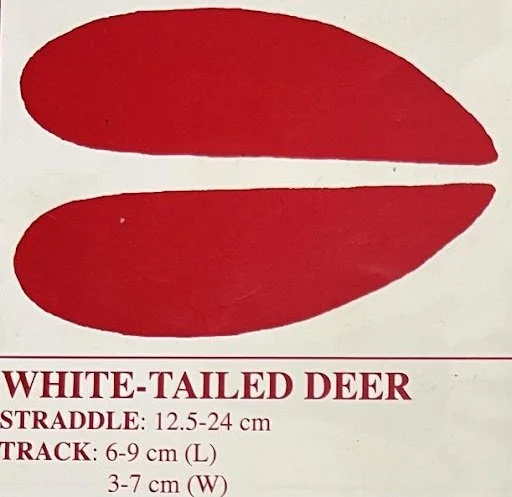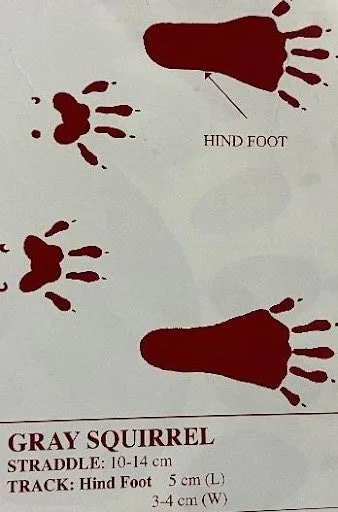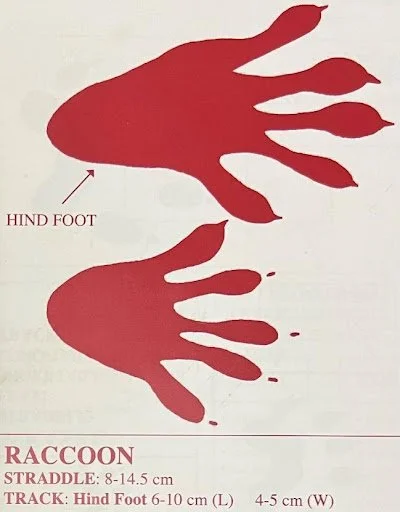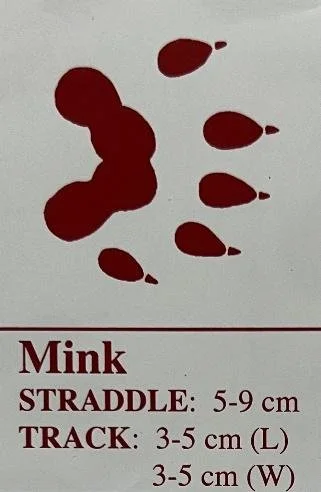Nature’s Mysteries: Naturalist Notes
Winter is a magical time of year. The land is covered in a blanket of snow while all seems quiet and still. We are reminded that it is not so every time we see tracks in the freshly fallen snow. There is a story behind every track, and trying to discover that story is part of winter’s magic.
It is not always easy to know what animals you have in an area or what they are up to. Tracks can give a lot of that information. Finding an animal track can answer some questions like, “what animal(s) were here?”, “in what direction were they going?”, “how fast were they going?”, and “what were they doing?” When you find an animal track you become a nature detective trying to solve a mystery. So, dust off your ol’ deerstalkers cap, pull out your monocle and pipe, and let’s crack the case and learn some animal tracks!
The pattern of animal movement is the first thing you’ll want to identify after you find a track. The four basic patterns for mammals are walker/trotter, hopper, waddler, and bounder:
Walker/trotters: This group walks smoothly, moving the front foot from one side of their body, then the back (or hind) foot on the opposite side. The pattern is then repeated for the other feet. They can move their feet simultaneously, so the front right foot moves at the same time as the left back foot. Because walkers put their back foot in directly where their front foot was the track pattern is a line showing only the animal’s hind tracks. Mammals that fit into this group are deer, fox, coyote, and bobcat.
Hoppers: With this group, the animals have larger hind feet and smaller front feet. They push off with their hind feet, landing on their front feet and then swinging their back feet to the front. This leaves a set of four tracks with their back feet ahead of their front feet. Rabbits, squirrels, and mice are mammals that fit into this group
Waddlers: When moving slowly, both front and hind feet on the same side are lifted and move at the same time. Then they shift their weight to the other side of their body to move their other feet. Their hind foot oversteps the front one, so their tracks show the back foot ahead of the front foot. Bears, beavers, raccoons, and woodchucks are mammals that belong to this group of movers
Bounders: These animals move like accordions. They spring into the air, pushing with their hind feet. While in the air they stretch fully out. Their front feet land on the ground first then lift up to allow the back feet to come down. This means the tracks we see in the pattern are of the animal’s hind feet. Mammals in this group include minks, otters, and weasels.
So, after you deduce what group the track pattern belongs to we can narrow it down to a species by looking at track size and shape and straddle measurements. Straddle is the width of the animal’s tracks which corresponds to the width of the animal usually.
Here are some of the common mammal tracks seen at Johnson:
Walkers/trotters
Hopper
Waddler
Bounder
So next time you hit the trails, especially after a good snowfall, see what tracks you can find. Follow them and try to find the story behind them!
If you want to test yourself see if you can identify all the different tracks in this picture! *Hint there are four different mammals.
Submitted by: Cathy Wesley, naturalist, November 2022











